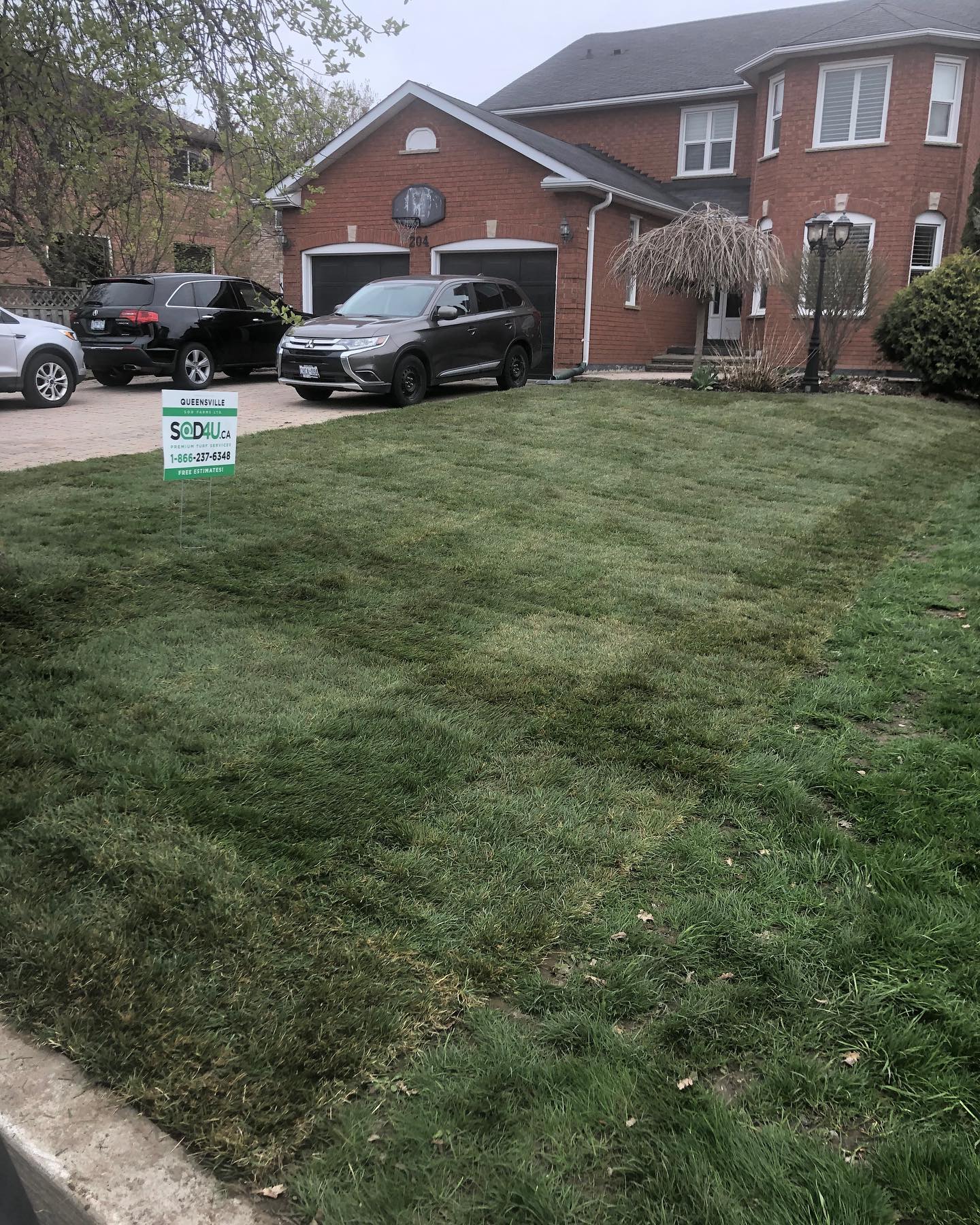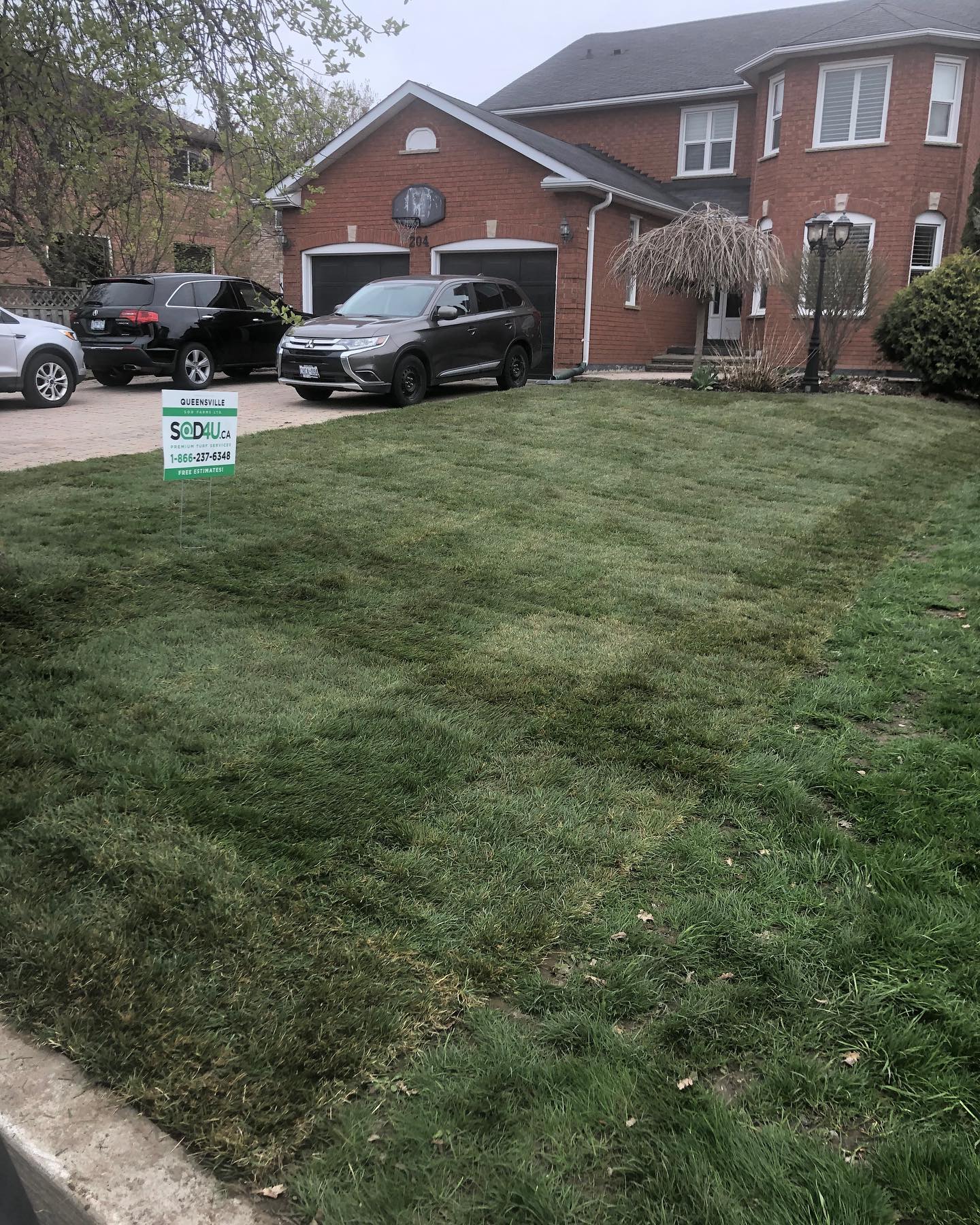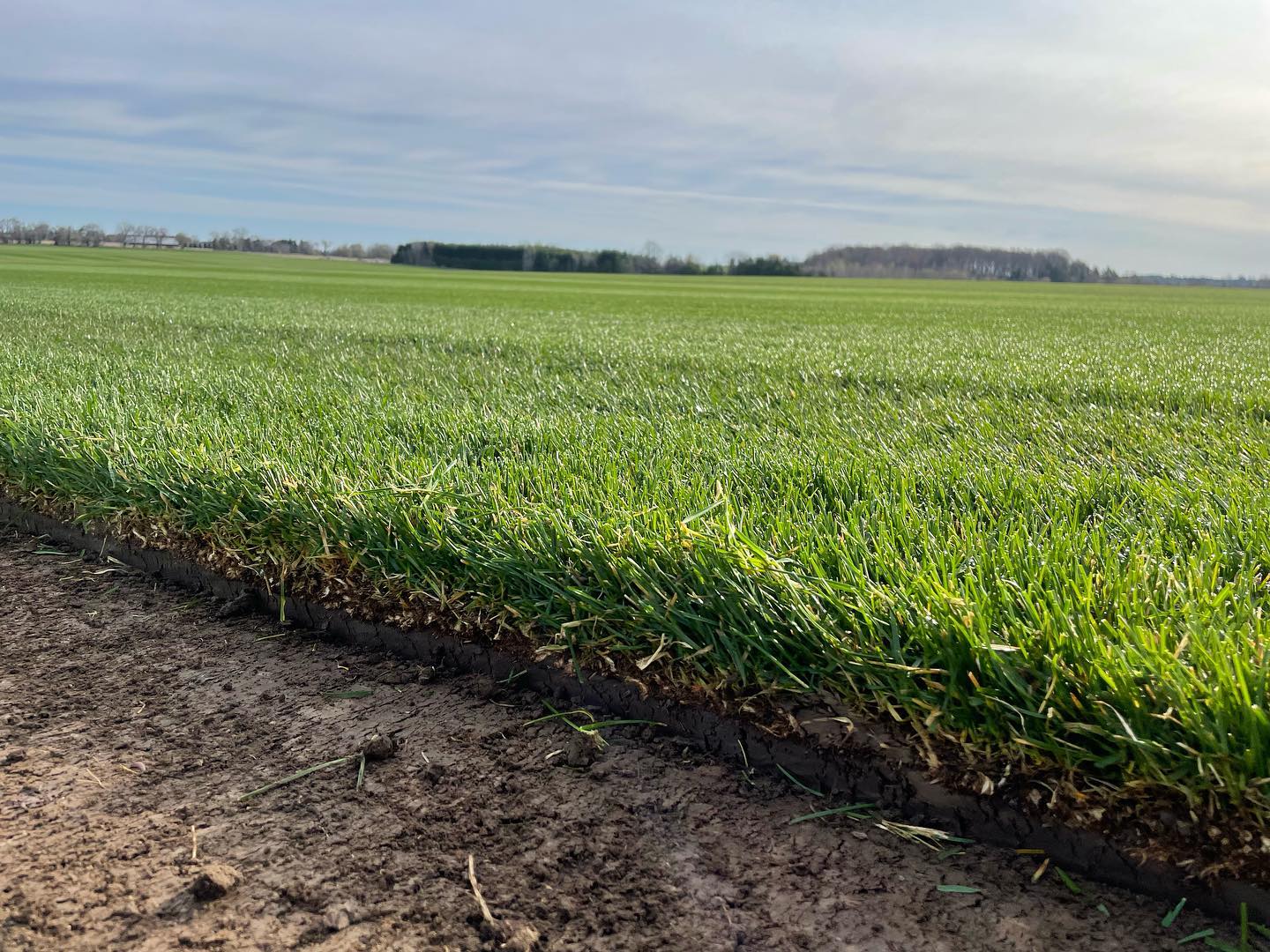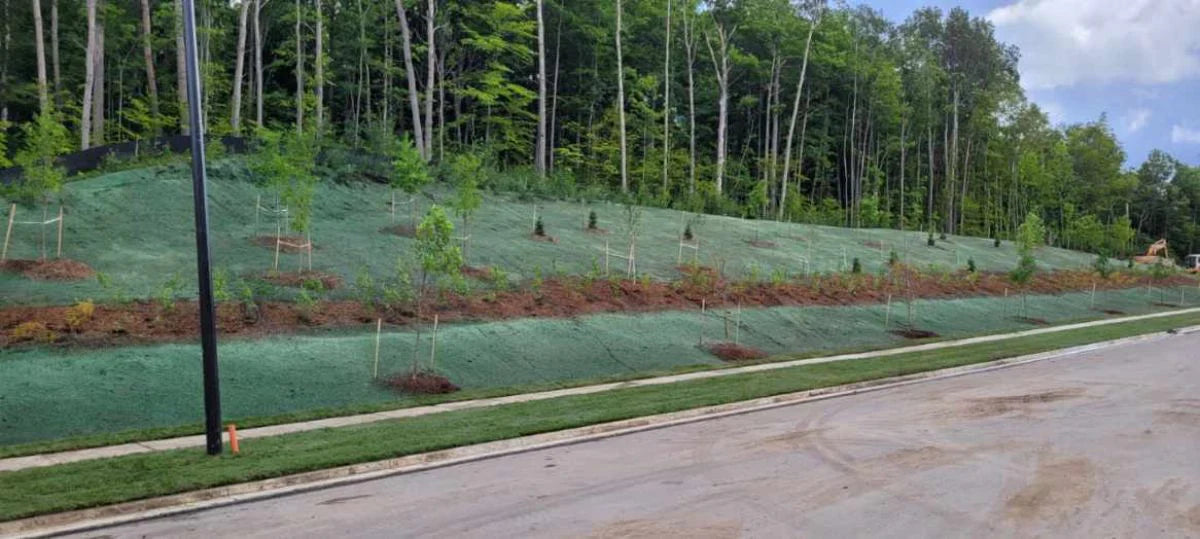While there are many options that you could go with to get your lawn looking green and lush, the best way to do so is through the use of sod. In this article, we will discuss the different reasons to consider sod for your lawn, outlining its various advantages and helping you decide if it is truly right for you.

Table of Contents
- Advantages of Sod
- Immediate Results
- Rainwater Runoff and Erosion Control
- Weed Growth Suppression
- Air Pollution Absorption
- Noise Pollution Absorption
- Heat Reduction
- Natural Fertilizer
- Final Thoughts
- FAQs
Advantages of Sod
There are many reasons to consider sod installation, all of which will greatly benefit you and your home. So, let’s take a look at some of the specific benefits of sod:
1. Immediate Results
Instead of waiting weeks or months for grass to grow using standard seeding methods, installing sod means that you get immediate results. With sod, your grass will be green, vibrant, and fully developed from the start, allowing you to enjoy a beautiful lawn right away.
2. Rainwater Runoff and Erosion Control
Sod protects your soil, helping to stabilize it and prevent soil loss from erosion due to wind or water runoff. The stable land provided by sod can slow the flow of heavy rainwater, which means that this type of control can then prevent flooding and other types of water damage to your home.
3. Weed Growth Suppression
Sod can suppress weed growth as it creates a uniform and dense cover that ultimately makes it difficult for weeds to take root. In general, sod outcompetes weeds. This doesn’t just reduce their growth, it also lessens the need for herbicides or any other types of weed removal.
4. Air Pollution Absorption
Sod can absorb some of the harmful pollutants in the air. Like all plants, it can also bring down levels of carbon dioxide (CO2) and then release oxygen back into the air. While this seems like a normal benefit of any greenery, it has been found that 25 square feet of healthy sod has the ability to produce enough oxygen for one grown adult every day.
5. Noise Pollution Absorption
Sod can effectively absorb sound, silencing the noise pollution around your home, which is particularly helpful if you live in an urban or suburban area. Indeed, grass has been known to reduce various sounds and noise in high-traffic areas that may be stressful to the people living there.
6. Heat Reduction
A great advantage of sod is that it is able to help with temperature regulation around your home as it can absorb the sun’s rays better than pavement or asphalt. In fact, sod has a cooling effect that can reduce the temperature around your home by a minimum of 10 to 15 degrees on a hot day, allowing your family to freely play outside and even run around barefoot on the lawn.
7. Natural Fertilizer
Sod acts as a natural fertilizer by creating a healthy environment for the soil no matter the climate or habitat, which in turn can help make your soil healthier. In this way, grass sod keeps the soil active and thriving, reconditioning it and making sure that it stays alive.
Final Thoughts
Throughout this article, we have discussed 6 benefits of sodding: the fact that it gives you immediate results, helps with rainwater runoff and erosion control, suppresses weed growth, absorbs air and noise pollution, reduces heat, and acts as a natural fertilizer.
At Queensville Sod, we offer both commercial and residential sod installation services, here to help you obtain a beautiful and vibrant lawn. For more information on sodding and to discuss your options, contact us today!
FAQs
What is sod?
Sod is a type of grass that is pre-grown in a farm, sold in squares or rolls for easy installation and instant lawn results.
Does sod need to be installed by a professional or can I do it myself?
While you can install sod by yourself, it is recommended to hire professionals for the best results since professionals have knowledge and experience to properly install sod and ensure root establishment.
Can sod be installed in any season?
Yes, sod can be installed at any time throughout the year. However, the best time would be during the spring or fall as these seasons, with cooler temperatures, provide the optimal conditions for establishment.
Can sod be installed on sloped areas?
Yes, sod can be installed on sloped areas, but it is best to have a professional do this as proper preparation and installation is necessary to prevent erosion and other such issues that could occur because of a slope.
How long does sod take to root?
After installation, sod typically takes 2 to 3 weeks to root. It is important to water the sod frequently during this time to promote root development.
How often should my newly installed sod be watered?
Newly installed sod should be watered daily for the first 2 weeks post-installation to promote root development. After the roots have been established, you can gradually reduce the frequency of watering.
How long before my sod is ready for regular use?
Once the roots have been established, your sod is ready for regular use. As such, this would be around 2 to 3 weeks after installation. Within that timeframe, avoid excessive traffic or heavy use of the sod.
How do I maintain my sod?
There are four main areas of maintenance that should be focused on: watering, mowing, fertilizing, and dealing with any disease or pest issues. It is a good idea to create a regular maintenance routine and consistently follow it to keep your sod healthy.
How soon can I mow my sod?
The sod’s roots should be established before you can mow the grass, so generally speaking, 2 to 3 weeks after installation is when you can start mowing.
How long does sod last?
Sod should be able to last for many years, but its actual lifespan is dependent on a variety of factors including the type of grass, climate, maintenance, and usage.





